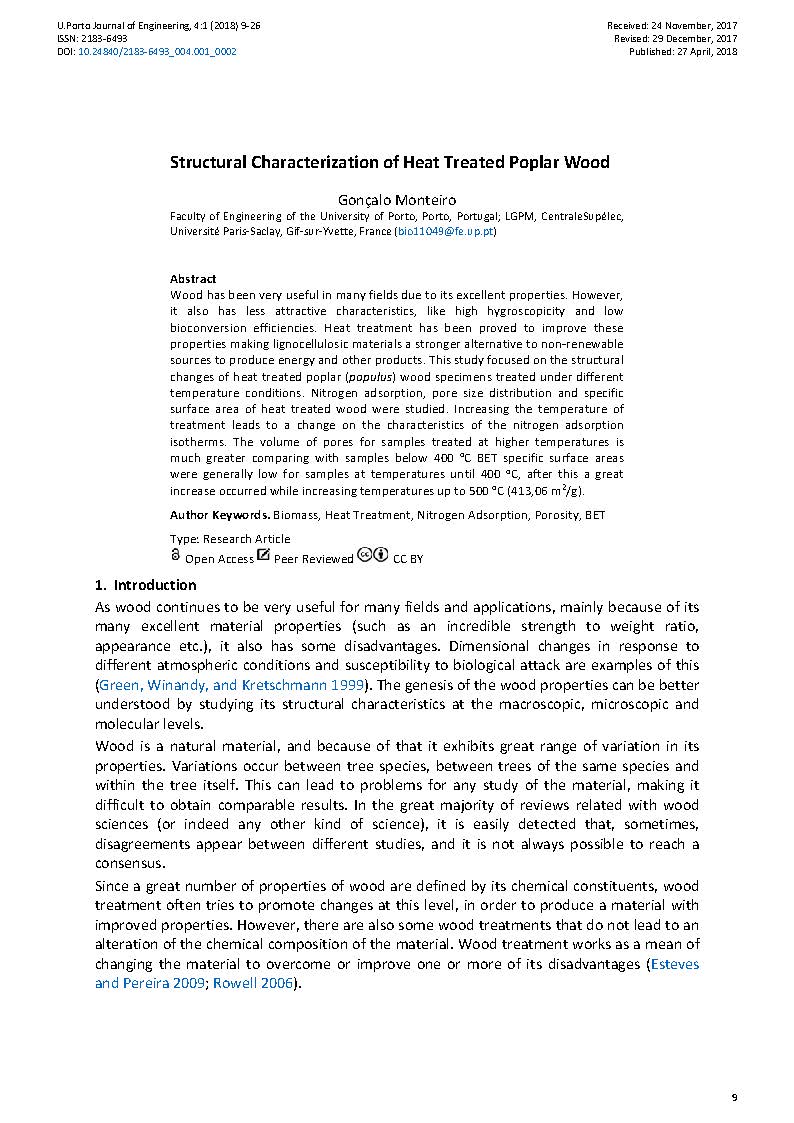Structural Characterization of Heat Treated Poplar Wood
Main Article Content
Abstract
Wood has been very useful in many fields due to its excellent properties. However, it also has less attractive characteristics, like high hygroscopicity and low bioconversion efficiencies. Heat treatment has been proved to improve these properties making lignocellulosic materials a stronger alternative to non-renewable sources to produce energy and other products. This study focused on the structural changes of heat treated poplar (populus) wood specimens treated under different temperature conditions. Nitrogen adsorption, pore size distribution and specific surface area of heat treated wood were studied. Increasing the temperature of treatment leads to a change on the characteristics of the nitrogen adsorption isotherms. The volume of pores for samples treated at higher temperatures is much greater comparing with samples below 400 oC BET specific surface areas were generally low for samples at temperatures until 400 oC, after this a great increase occurred while increasing temperatures up to 500 oC (413,06 m2/g).
Downloads
Article Details
Authors who publish with this journal agree to the following terms:
- Authors retain copyright and grant the journal right of first publication with the work simultaneously licensed under a Creative Commons Attribution License that allows others to share the work with an acknowledgement of the work's authorship and initial publication in this journal.
- Authors grant the journal the rights to provide the article in all forms and media so the article can be used on the latest technology even after publication and ensure its long-term preservation.
- Authors are able to enter into separate, additional contractual arrangements for the non-exclusive distribution of the journal's published version of the work (e.g., post it to an institutional repository or publish it in a book), with an acknowledgement of its initial publication in this journal.
- Authors are permitted and encouraged to post their work online (e.g., in institutional repositories or on their website) prior to and during the submission process, as it can lead to productive exchanges, as well as earlier and greater citation of published work (See The Effect of Open Access).

